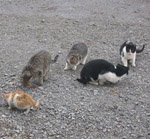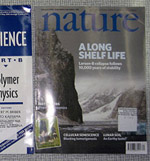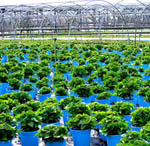Are military exercises compatible with the conservation of a threatened ecosystem?
 Birds,
Birds,  Grassland,
Grassland,  Protected Areas
Protected Areas  Covering over 1 million hectares across the United States, military bases sometimes encompass highly threatened ecosystems. For this reason, conservationists have been giving increased attention to military installations as potential places for conserving native biodiversity.
Covering over 1 million hectares across the United States, military bases sometimes encompass highly threatened ecosystems. For this reason, conservationists have been giving increased attention to military installations as potential places for conserving native biodiversity.
But with their intensive training exercises often involving explosions and heavy machinery, are military bases actually good for conservation?
Researchers wade into this question with a new case study in the journal Environmental Management looking at bird communities at Fort Riley, a 40,273-ha U.S. Army training area in the Flint Hills of northeast Kansas. The Flint Hills contain some of the country's largest remaining areas of tall-grass prairie - a highly threatened biome that has been almost completely lost to agriculture and development in North America.
Researcher Jim Rivers and fellow study authors compared data from 11 years of avian surveys on the base and nearby Konza Prairie, a 3478-hectare tall-grass prairie preserve jointly owned by the Nature Conservancy and Kansas State University. They found that between 1991-2001 the number and composition of species were largely the same at the two locations.
These results are a little surprising given the intensity of training activities that occur on the base. However, the study authors speculate that these activities may actually mimic historic natural disturbances.
The heavy machinery trampling vegetation and soils may substitute for the herds of bison that roamed the hills for millennia but were hunted to near extinction. The fires caused by training may simulate the burning from lightning that has long been suppressed by people.
Since the training occurs in specific locations, it creates a complex patchwork of disturbed and undisturbed areas. This resulting habitat heterogeneity may help support a variety of species.
While the results are promising, the study also raises some additional questions about the conservation value of the base. They found evidence that the avian community at Fort Riley experienced more pronounced changes in species composition and abundance from year to year compared to the Konza Prairie.
This could mean that training exercises at the base are negatively impacting birds but the effects are not visible by just looking at species richness. Specifically, the base could be creating a population sink by causing decreases in bird numbers that are then replenished by colonizers from the surrounding countryside.
The study authors do not necessarily believe that this is the case but they recommend that more research be done to find out for sure - for example by looking at reproductive success of the avian communities on military bases. In addition, they write,
"Grassland birds may not be representative of other small-bodied organisms in their ability to rapidly respond to habitat disturbances, as birds are volant and able to colonize patches more easily than similar sized organisms with a more limited dispersal capability. Therefore, additional research to understand how other vertebrate communities respond to military training is clearly warranted."
--Reviewed by Rob Goldstein
Rivers, J., Gipson, P., Althoff, D., & Pontius, J. (2010). Long-Term Community Dynamics of Small Landbirds with and Without Exposure to Extensive Disturbance from Military Training Activities Environmental Management DOI: 10.1007/s00267-009-9421-6




Reader Comments